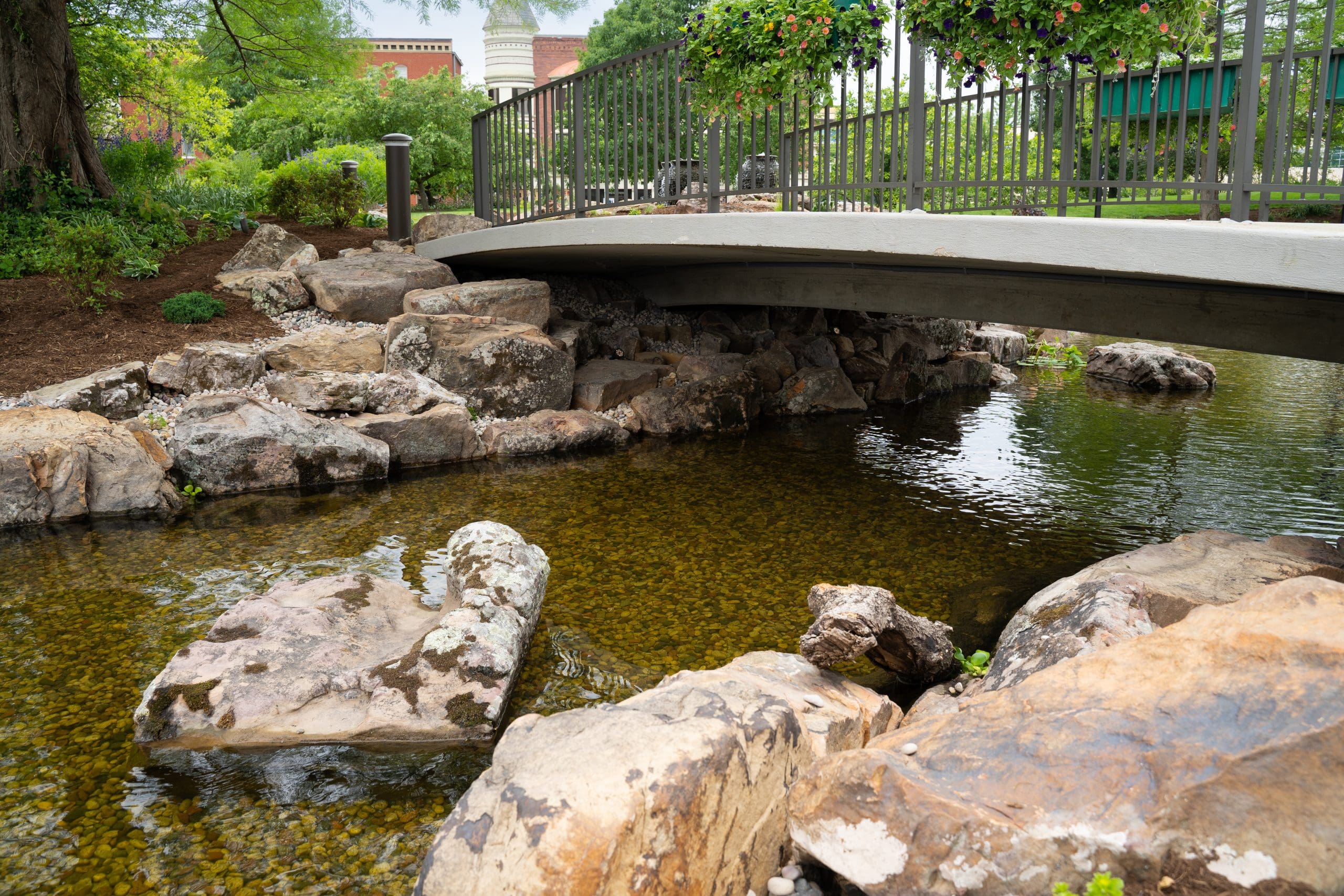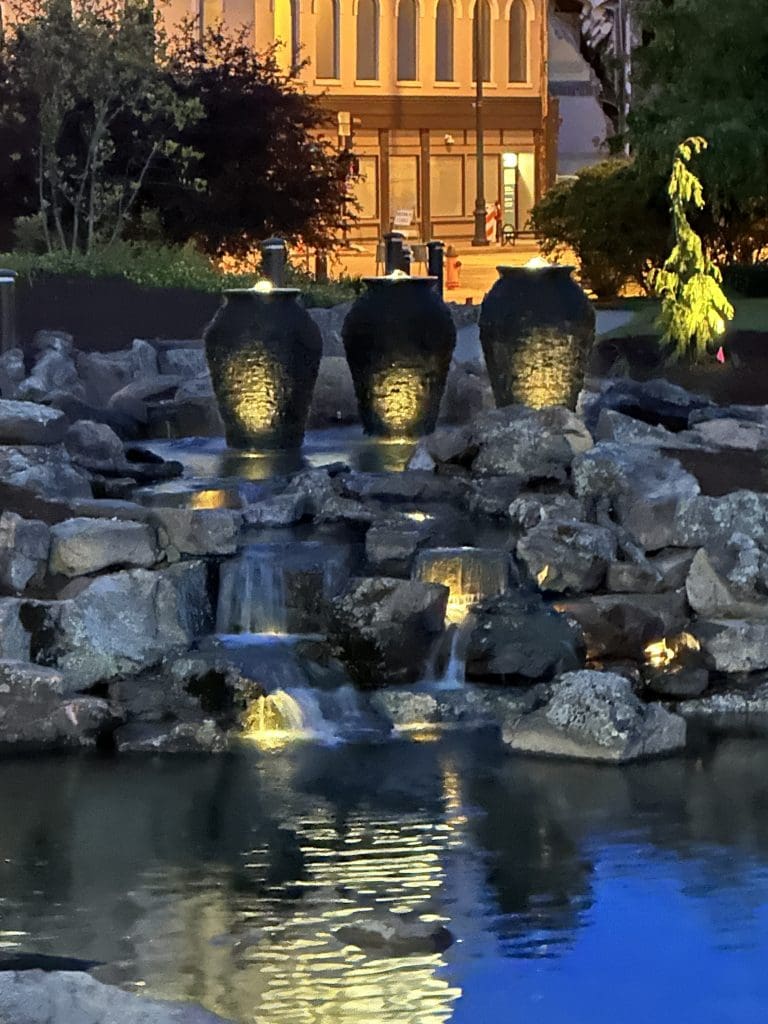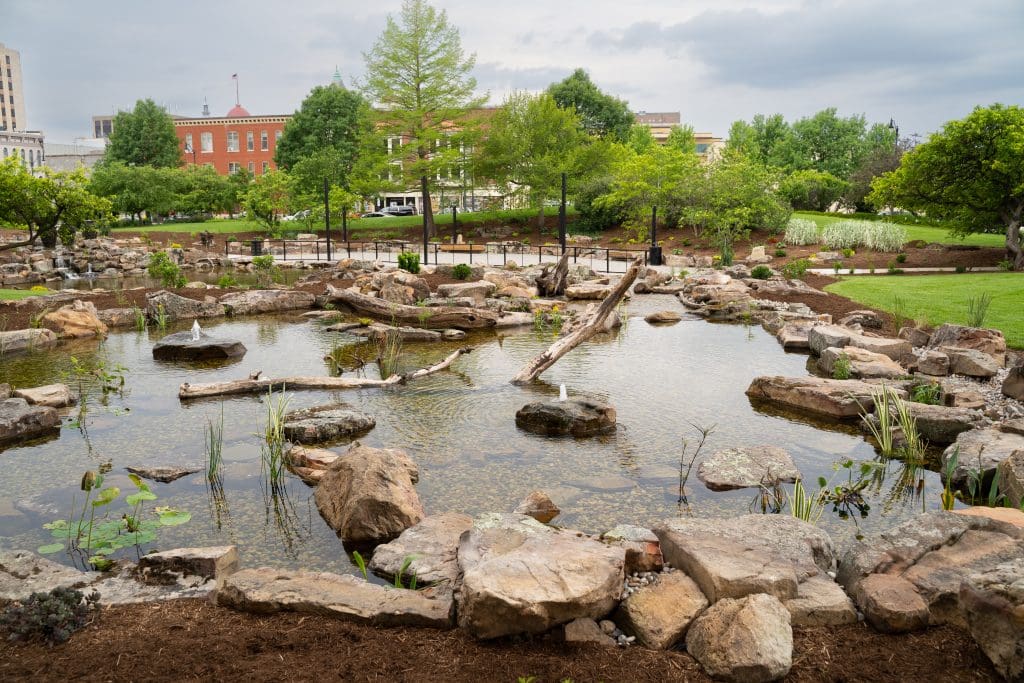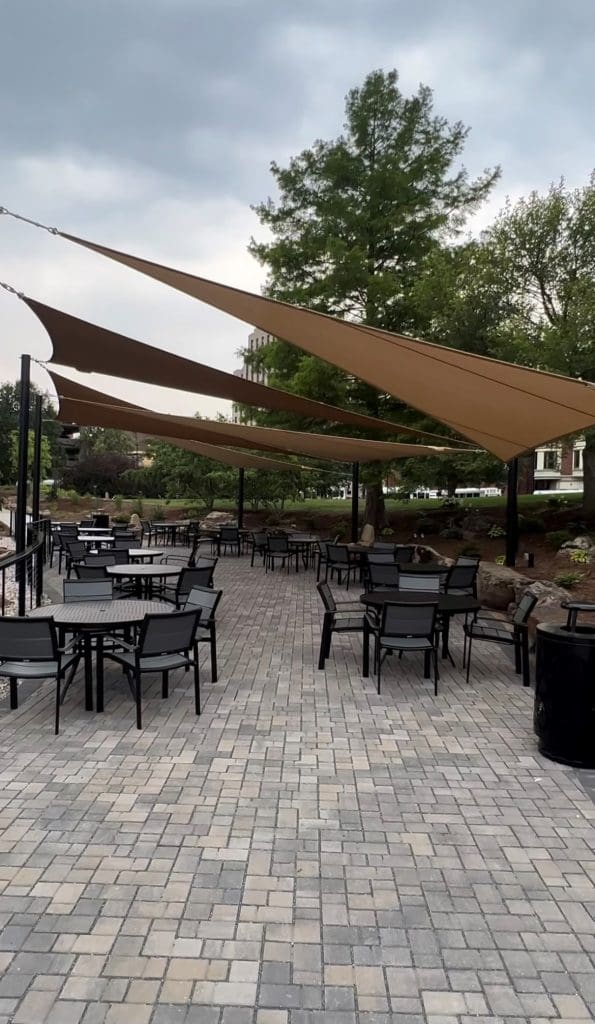
In the heart of Springfield, Illinois, you’ll find a reinvented landscape that provides education and enjoyment for locals and visitors. The original landscape for this site was installed over 50 years ago to help people understand the importance of watersheds. As time passed, the existing concrete fountains and water sources began to deteriorate, requiring lots of maintenance to remain functional. Another concern was the water clarity, which required extensive chemical use to stay clear.
Landon Kirby, the owner of Knob Hill Landscape Company, and his team set out to remove the old structure and replace it with a self-sustaining ecosystem to enhance downtown and highlight natural areas. For Kirby and his team, winning a Gold Award in the 2023 Awards of Excellence is truly special.

“This award gives us an unexplainable feeling of pride and accomplishment,” Kirby says. “To be recognized at this high level, on a national stage, for something you dreamed in your head and made a reality is amazing!”
The first step to revive this ecosystem was removing over 500 yards of concrete from the existing structure.
“We began the demolition of the concrete reflection pool with a large excavator equipped with a large breaker attachment and few concrete saws,” Kirby notes.
After the old pond was removed, they began constructing the new aquatic site, which follows the same terrain and layout as the pre-existing site but is more sustainable.
The new ecosystem flows north to south and features a wetland filter that drains into the main pond as a five-foot waterfall, which then flows south through a series of waterfalls before ending in a shallow pond with a prefilter. From the south end, the 160,000 gallons of water are recirculated through the wetland with a filtration system.

Like any ecosystem, plants are a vital part of its function.
“The finished ecosystem is in an existing green space that is over 50 years old, so we used many of the same plant species to make the project appear as if it were always there,” Kirby adds. “The aquatic plants installed were planted directly into shallow water rock beds that will aid in water filtration and the overall biomimicry of the ecosystem.”
In addition to the plants, Knob Hill Landscapes installed 600 tons of mossy-sandstone boulders to enhance the natural feel and function of the site.
The space also includes a permeable paver patio with a shade sail system and seating for visitors to view the main waterfall. Water that falls through the deck flows through 30 inches of limestone before getting absorbed into the soil. In the future, a series of signs and stations will be created to give visitors a better understanding of watersheds and their functions.
“Visitors will also see that it is possible to create a water feature with crystal clear water that is completely naturally filtered and will never require additional chemicals,” Kirby says.
The new ecosystem was installed during winter, which came with a series of challenges for the team.

“We divided the project area into sections that were the most temperature-sensitive and focused on them early in the winter before it got really cold,” Kirby says. “An example would be the seams for our liner; we positioned and timed one of them so that it would occur under the existing bridge that spans the ecosystem. This allowed us to enclose the area under the bridge with tarps and pump heat into that area to raise temperature to the proper operating recommendation for liner seaming.”
Kirby says they also dealt with lots of mud and frozen tracks on equipment.
Another challenge was shipping materials to the site, as each load needed to be staged for efficient unloading to keep the streets clear for downtown traffic. Still, with clear communication, they were able to minimize any problems. As winter ended, visitors were able to experience the final product.
“Seeing everyone’s initial reaction to the project has been extremely rewarding,” Kirby says. “Most are completely blown away by the end result and cannot believe that we completed it in such a short time frame. Equally rewarding for me personally was the effort and pride that our staff put in on a daily basis in building this once-in-a-lifetime project.”
Interested in participating in the Awards of Excellence? Be sure to enter your projects when entries open in February 2024.

